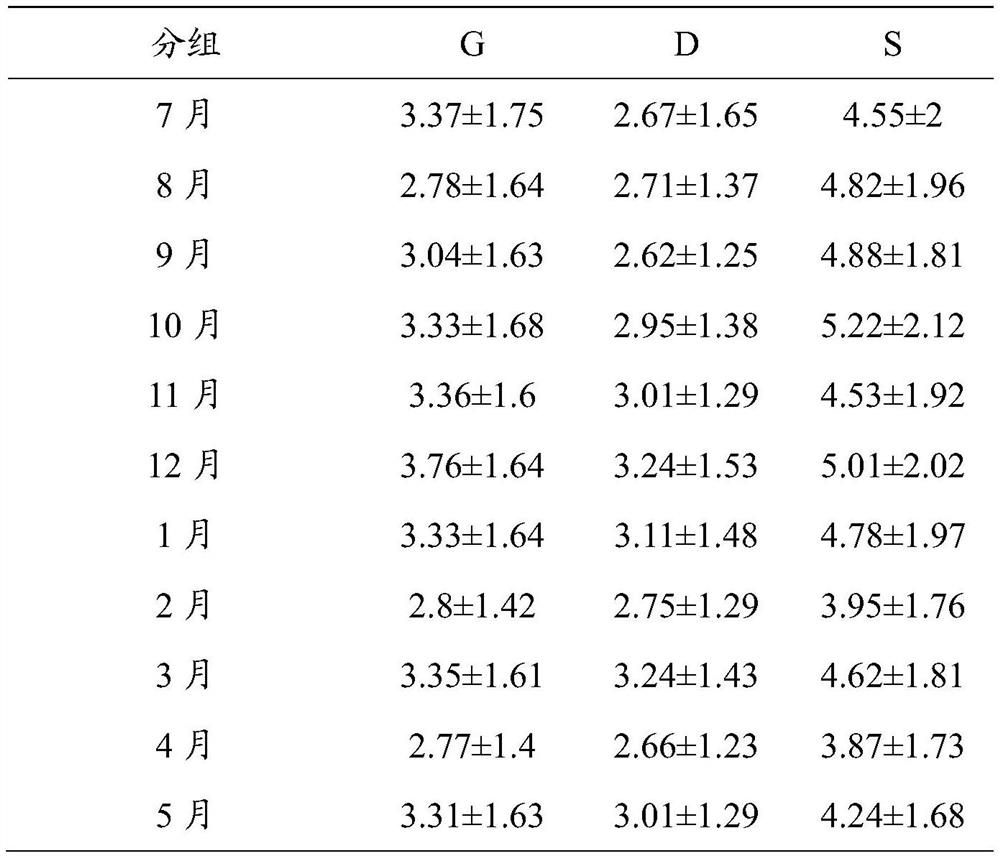Method for feeding egg-laying pigeons in single cage
A technology for egg-laying pigeons and male pigeons, applied in the field of poultry breeding, can solve the problems of slowing down genetic progress, inability to judge, and inability to find out, etc., to achieve the effects of increasing the risk of infectious diseases, reducing the breakage rate of pigeon eggs, and reducing feed waste
- Summary
- Abstract
- Description
- Claims
- Application Information
AI Technical Summary
Problems solved by technology
Method used
Image
Examples
Embodiment 1
[0023] The young pigeons mixed in the same batch of flying sheds have been sexed, and the hens wear red anklets. At the age of 5 months, 30 male pigeons and 60 female pigeons were randomly selected. Among them, 30 cocks were paired with 30 hens; the other 30 hens were kept in single cages, and the cages were completely covered with cardboard, so that physical contact could not be formed between the pigeons. Pigeon cage distribution position, feeding management is the same. Egg production was recorded for each cage. And transferred to flying shed (2 months old), before pairing (before basketing, 4 months old), male and female pairing (after pairing, before laying eggs, 5 months old) and single hen (5 months old, 6 months old) 7-month-old, 7-month-old hens were subjected to wing vein blood collection, and serum was separated to determine gonadotropin-releasing hormone (GnRH) and gonadotropin-inhibiting hormone (GnIH).
[0024] The results of hormone measurement are: the level...
Embodiment 2
[0031] The sexes are done and the hens wear red anklets. The same batch of 1,000 baby pigeons, including 200 cocks and 800 hens, were transferred to flying sheds for breeding. There are 100 male pigeons in each room, and 200 hens in each room, and they are distributed in the order of female, male, female, female, male, female... at intervals. At the age of 5.5 months, 96 cocks and 288 hens were randomly selected, transferred to the egg-laying loft, and the experiment was started. Three groups of male and female pairing (G), double female pairing (S), and single hen (D) are set when basketing, and 4 repetitions are set for each group, and 24 pairs are each repeated (for the single hen group, each repetition 24 only). The distribution position of each group of pigeon cages, the feeding management is the same. Record the egg production situation, the number of eggs laid and the number of broken eggs of every cage pigeon are recorded separately, based on the single cage data, t...
Embodiment 3
[0043] The sexes are done and the hens wear red anklets. The same batch of 2,000 baby pigeons, including 400 cocks and 1,600 hens, were transferred to flying sheds for breeding. There are 100 male pigeons in each room, and 200 female pigeons in each room; there are 10 rooms in total, 2 rows, and each row is distributed in the order of female, male, female, female, male, female.... At the age of 5.5 months, randomly select 80 cocks and 1500 hens, transfer them to the egg-laying loft, and raise them in single cages. The cocks are scattered among the hens, the more even the distribution in the loft the better. Record the egg production situation, the number of eggs laid and the number of broken eggs of every cage pigeon are recorded separately, based on the single cage data, the average value of each group is counted every month.
[0044] Table 4 hens single cage rearing production performance
[0045] Unit: day, %, %
[0046]
[0047] Conclusion: During the production perio...
PUM
 Login to View More
Login to View More Abstract
Description
Claims
Application Information
 Login to View More
Login to View More - R&D
- Intellectual Property
- Life Sciences
- Materials
- Tech Scout
- Unparalleled Data Quality
- Higher Quality Content
- 60% Fewer Hallucinations
Browse by: Latest US Patents, China's latest patents, Technical Efficacy Thesaurus, Application Domain, Technology Topic, Popular Technical Reports.
© 2025 PatSnap. All rights reserved.Legal|Privacy policy|Modern Slavery Act Transparency Statement|Sitemap|About US| Contact US: help@patsnap.com



